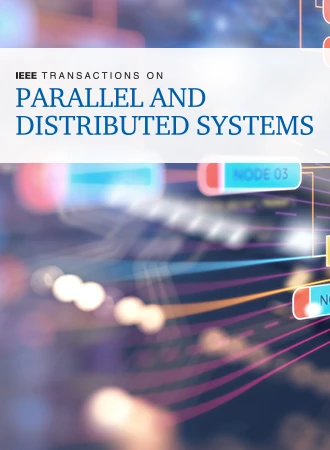GreenFlow:用于深度学习工作负载的碳效率调度程序
IF 5.6
2区 计算机科学
Q1 COMPUTER SCIENCE, THEORY & METHODS
IEEE Transactions on Parallel and Distributed Systems
Pub Date : 2024-10-14
DOI:10.1109/TPDS.2024.3470074
引用次数: 0
摘要
深度学习(DL)已经成为现代软件的关键组成部分。训练DL模型会导致大量的碳排放。在数据中心,在尽早完成DL培训工作的同时减少碳排放非常重要。在本文中,我们提出了GreenFlow,这是一个GPU集群调度器,可以在碳排放预算下减少平均作业完成时间(JCT)。我们首先提出了深度学习训练任务的性能模型,以预测不同配置下的吞吐量和能耗性能。GreenFlow基于性能模型和网格碳强度动态分配gpu,调整深度学习训练作业的gpu级和作业级配置。GreenFlow将网络打包和伙伴分配应用于工作安排,从而避免了资源分散带来的额外碳。在真实测试平台上的评估表明,当排放相同数量的碳时,与竞争基准相比,GreenFlow可以将平均JCT提高2.15倍。本文章由计算机程序翻译,如有差异,请以英文原文为准。
GreenFlow: A Carbon-Efficient Scheduler for Deep Learning Workloads
Deep learning (DL) has become a key component of modern software. Training DL models leads to huge carbon emissions. In data centers, it is important to reduce carbon emissions while completing DL training jobs early. In this article, we propose GreenFlow, a GPU cluster scheduler that reduces the average Job Completion Time (JCT) under a carbon emission budget. We first present performance models for DL training jobs to predict the throughput and energy consumption performance under different configurations. Based on the performance models and the carbon intensity of the grid, GreenFlow dynamically allocates GPUs, and adjusts the GPU-level and job-level configurations of DL training jobs. GreenFlow applies network packing and buddy allocation to job placement, thus avoiding extra carbon incurred by resource fragmentations. Evaluations on a real testbed show that when emitting the same amount of carbon, GreenFlow can improve the average JCT by up to 2.15×, compared to competitive baselines.
求助全文
通过发布文献求助,成功后即可免费获取论文全文。
去求助
来源期刊

IEEE Transactions on Parallel and Distributed Systems
工程技术-工程:电子与电气
CiteScore
11.00
自引率
9.40%
发文量
281
审稿时长
5.6 months
期刊介绍:
IEEE Transactions on Parallel and Distributed Systems (TPDS) is published monthly. It publishes a range of papers, comments on previously published papers, and survey articles that deal with the parallel and distributed systems research areas of current importance to our readers. Particular areas of interest include, but are not limited to:
a) Parallel and distributed algorithms, focusing on topics such as: models of computation; numerical, combinatorial, and data-intensive parallel algorithms, scalability of algorithms and data structures for parallel and distributed systems, communication and synchronization protocols, network algorithms, scheduling, and load balancing.
b) Applications of parallel and distributed computing, including computational and data-enabled science and engineering, big data applications, parallel crowd sourcing, large-scale social network analysis, management of big data, cloud and grid computing, scientific and biomedical applications, mobile computing, and cyber-physical systems.
c) Parallel and distributed architectures, including architectures for instruction-level and thread-level parallelism; design, analysis, implementation, fault resilience and performance measurements of multiple-processor systems; multicore processors, heterogeneous many-core systems; petascale and exascale systems designs; novel big data architectures; special purpose architectures, including graphics processors, signal processors, network processors, media accelerators, and other special purpose processors and accelerators; impact of technology on architecture; network and interconnect architectures; parallel I/O and storage systems; architecture of the memory hierarchy; power-efficient and green computing architectures; dependable architectures; and performance modeling and evaluation.
d) Parallel and distributed software, including parallel and multicore programming languages and compilers, runtime systems, operating systems, Internet computing and web services, resource management including green computing, middleware for grids, clouds, and data centers, libraries, performance modeling and evaluation, parallel programming paradigms, and programming environments and tools.
 求助内容:
求助内容: 应助结果提醒方式:
应助结果提醒方式:


